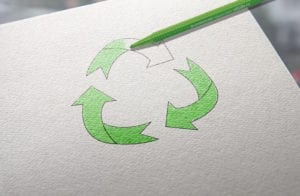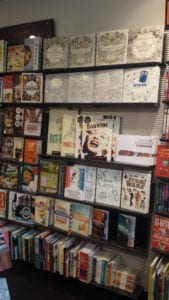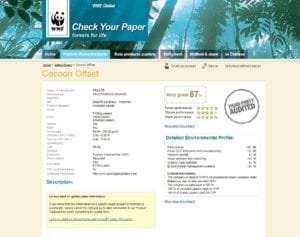When it comes to books, something that rarely gets the attention it deserves – is the paper. When it comes to coloring books, which have taken the world by storm in recent years, one should choose paper that not only satisfies the coloring requirements, but also the environment.
 It’s hard to imagine how many coloring books have been produced over the last couple of years. Manyn is an understatement. When such a trend as this coloring trend flushes ipon us, in our time, one can only hope that the producers not only think about profits but also the environment, in all the coloring fun. Or can you do more than just hope?
It’s hard to imagine how many coloring books have been produced over the last couple of years. Manyn is an understatement. When such a trend as this coloring trend flushes ipon us, in our time, one can only hope that the producers not only think about profits but also the environment, in all the coloring fun. Or can you do more than just hope?

On the one hand, one wants to have a paper that gives the coloring work a good experience, when the colors meets the paper, and on the other hand one wants to have as little footprint on the environment as possible. It is by the desire of this “double satisfaction” that one had to make some unwanted choices in the past. But not anymore. Now, the development of paper recycling has come so far that one does not need to rely on paper quality requirements alone. The environmental paper can be obtained white as if it were bleached, and with the structures and surfaces that is required to satisfy the coloring world.

The environmental calculator result on what our choice of paper (Cocoon Offset) does better for the environment than plain paper. Calculated from Destination Coloring Bergen, Trondheim and Oslo, only the first edition of a total of 6000 books.
By, for example, recycling wood-free paper, one reduces the amount of waste, co2 and greenhouse gases, freight emissions, water used for manufacturing, energy and forests. Just how much smaller the footprint is by choosing some paper over another, one can calculate this, among other things with environmental calculators for paper. When we figured out which paper we want to use, we have used the calculator offered by Arjowiggins Graphic in France, which is a paper-based environmentally focused provider. (Which is also where our ECO-labeled printing house purchases the paper for our books.) Try it yourself (here).
If you were to wonder where to test whether a coloring book or other books have paper that is good for the environment or not, then you can go to check your paper. Here you get detailed information about the paper, in addition to a total assessment and a explanation of how it has been tested and measured.
 There are many choices you can make to satisfy your coloring requirements, regardless of whether the paper is environmentally friendly or not – there may be such things as paper thickness to avoid color passing through paper. But the thicker the paper, the more important it is to be environmentally friendly. Just as the number of pages is. The number of books you print up is also of interest, because the larger the print, the more impact you have with your choice of paper.
There are many choices you can make to satisfy your coloring requirements, regardless of whether the paper is environmentally friendly or not – there may be such things as paper thickness to avoid color passing through paper. But the thicker the paper, the more important it is to be environmentally friendly. Just as the number of pages is. The number of books you print up is also of interest, because the larger the print, the more impact you have with your choice of paper.
Destination Colouring is a series of advanced coloring books with various destinations as a theme. In addition to working with the traditional things like design, layout and communication – we work hard to constantly find the best solutions for the environment. We are constantly working to find the best combination of environmentally friendly and color-friendly paper. We are working to keep our footprint down, for example by printing locally. Printing locally also gives us the opportunity to see how the conditions are at the printing company where we print. That is important to us. We know that the people who work there have a great working enviroment, and we always have control over how they are focused on the sustainability.
Destination Colouring-books:
Paper:
Cocoon offset, Arjowiggins Graphic, France.
TS_EN_COCOON_OFFSET_00_ISS_01112015
The paper seen from an environmental perspective:
By using Cocoon Offset rather than a non-recycled paper, the environmental impact was reduced by: 1.520 kg of landfill, 225 kg of CO2 and greenhouse gases, 2.248 km of travel in the average European car, 41.740 liters of water, 2.604 kWh or energy, 2,470 kg of wood. Sources: Carbon footprint data evaluation by Labelia Conseil in accordance with the Bilan Carbone® methodology. Calculations are based on a comparison between the recycled paper used versus a virgin fiber paper according to the latest European BREF data (virgin fiber paper) available. Results are obtained according to technical information and subject to modification.
The figures above are calculated from the first edition of Destination Coloring Bergen, Destination Coloring Oslo and Destination Coloring Trondheim, totaling 6000 books.
Printing and ECO-labeling:
Molvik Graphic, Nordic Ecolabelled printer, License number: 2041 0960

